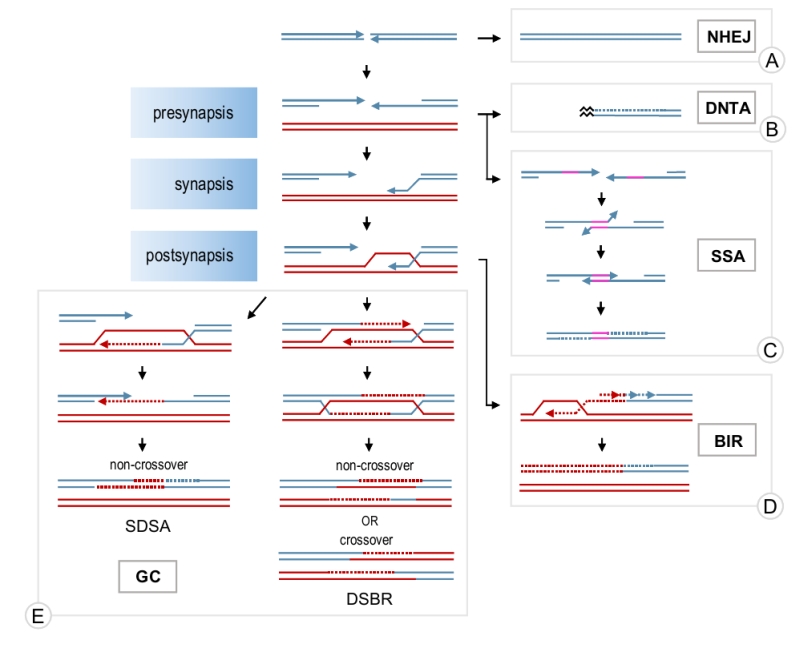Back to article: Putting together and taking apart: assembly and disassembly of the Rad51 nucleoprotein filament in DNA repair and genome stability
FIGURE 1: A general overview of DSB repair mechanisms. A DNA molecule with a DSB (blue lines) can either be repaired by NHEJ (A) or resected, thereby committing to HR. Sometimes, resected breaks can be healed by telomerase (DNTA, B) rather than repaired by HR but these events are rare. Resected DNA can be repaired by SSA (C) when there are direct repeats flanking the break (pink lines). Alternatively, resected ssDNA might invade a homologous donor molecule (red lines) enabling repair by BIR (D) or GC (E). During BIR, the invading strand is extended and the newly synthesised DNA is displaced from the donor to act as a template for the second strand. GC can proceed via SDSA or DSBR pathways. During SDSA, the invading ssDNA is extended, displaced from the donor and annealed to the other end of the break. DSBR involves the extension of the invading strand, capture of the second end of the break and the resolution of the dHJ intermediate formed. Arrow heads indicate 3′ ends of the DNA. Dotted lines show newly-synthesised DNA and their colours correspond to the DNA molecules that have been used as templates. The black zigzag represents the telomere. Abbreviations: NHEJ – non-homologous end joining; DNTA – de novo telomere addition; SSA – single-strand annealing; BIR – break-induced replication; GC – gene conversion; SDSA – synthesis-dependent strand annealing; DSBR – double-strand break repair.

